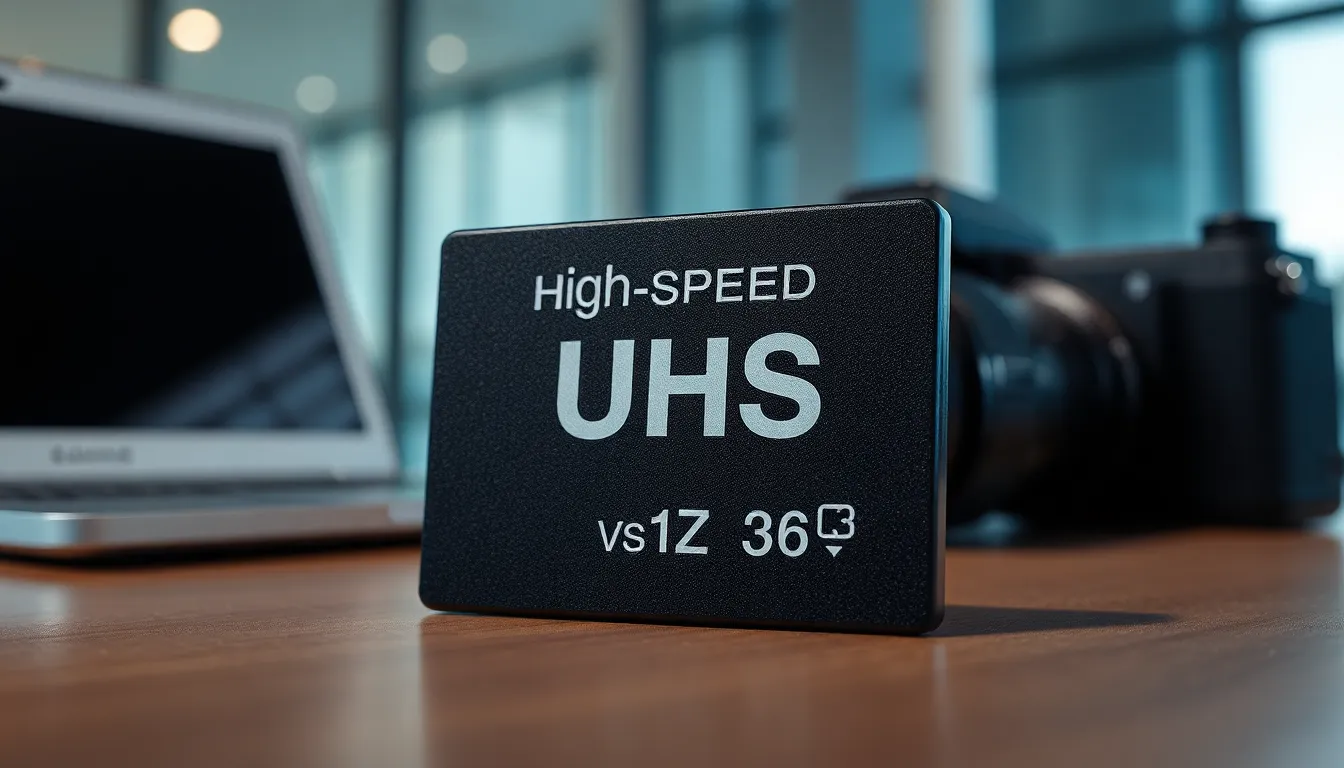In a world where technology evolves faster than a toddler on a sugar rush, UHS hardware stands out like a superhero in a sea of sidekicks. Designed for those who demand speed and reliability, it’s the secret sauce that makes everything run smoother. Imagine a world where your devices don’t just function—they thrive.
UHS hardware isn’t just another tech buzzword; it’s a game-changer. Whether you’re a gamer who needs lightning-fast load times or a professional who can’t afford delays, this hardware delivers. With its sleek design and unmatched performance, it’s like having a personal assistant who never takes a coffee break. Get ready to unleash the full potential of your devices and leave frustration behind.
Table of Contents
ToggleOverview of UHS Hardware
UHS hardware stands at the forefront of modern technology, tailored for users who prioritize speed and reliability. Designed to transform device performance, this hardware enhances user experiences in various applications. It provides gamers and professionals with rapid load times, significantly boosting productivity.
UHS hardware operates with advanced specifications that offer exceptional data transfer rates. Transfer speeds can reach up to 300 MB/s, depending on the specific UHS level, resulting in efficient media handling and quick file access. Such performance minimizes delays, enabling seamless multitasking.
Versatile by nature, UHS hardware supports a range of devices, including cameras, smartphones, and tablets. Users benefit from its compatibility with the latest technologies, ensuring that devices perform optimally. The implementation of UHS standards provides a unified performance benchmark within the industry, fostering innovation and efficiency.
Vendors supply UHS hardware in various capacities, accommodating diverse user requirements. From 16 GB to 1 TB, these options allow for tailored choices based on storage needs. Rapid advancements in this hardware further amplify the technology’s transformative impact.
Investing in UHS hardware translates into enhanced operational efficiency. It streamlines workflows and enhances overall device functionality. As technology continues to evolve, UHS hardware remains a pivotal component in maximizing digital experiences.
Types of UHS Hardware

UHS hardware comes in various types, each designed for specific performance needs and applications. Understanding the differences helps users choose the best option for their devices.
UHS-I vs UHS-II
UHS-I supports data transfer rates up to 104 MB/s, fulfilling basic performance needs for cameras and smartphones. Users often find this standard sufficient for standard image and video recording. On the other hand, UHS-II doubles the transfer rate, reaching up to 312 MB/s. This advanced standard benefits professionals who require fast data handling, particularly in high-resolution photography and 4K video recording. UHS-II features an additional row of pins, enhancing connection speed and reliability.
UHS-III and Beyond
UHS-III significantly advances performance, supporting speeds up to 624 MB/s. This improvement caters to demanding applications like real-time data streaming and high-end video capture. Furthermore, UHS-III maintains compatibility with UHS-I and UHS-II, ensuring broad device support. As technology evolves, future iterations may introduce even higher transfer rates, enhancing user experiences across all devices. These advancements illustrate the ongoing commitment to maximizing storage efficiency and performance.
Performance Metrics of UHS Hardware
UHS hardware plays a crucial role in delivering exceptional speed and efficiency for various applications. Evaluating performance metrics reveals significant advantages for users.
Speed Class Ratings
Speed class ratings indicate the minimum sustained write speeds for UHS hardware. UHS-I, for instance, carries a U1 rating, ensuring at least 10 MB/s. Users looking for higher performance find UHS-II hardware providing U3 ratings, guaranteeing 30 MB/s. UHS-III takes it further, offering faster speeds essential for data-intensive tasks. Understanding these ratings helps users select the right hardware based on specific needs, enhancing overall performance.
Application Performance
Application performance highlights the efficiency of UHS hardware in real-world scenarios. UHS-I supports standard tasks, while UHS-II meets the demands of professional photography, enabling rapid image captures and continuous shooting. UHS-III addresses the needs of high-definition video recording and real-time data streaming, proving essential for content creators. Optimal performance from UHS hardware directly correlates with increased productivity, streamlining workflows for users across diverse domains.
Compatibility and Usage
UHS hardware offers broad compatibility, functioning with many modern devices that enhance user experience.
Devices Supporting UHS Hardware
Smartphones frequently utilize UHS hardware for quicker app launches and efficient photo storage. Cameras benefit from this technology, especially those shooting in high resolutions or recording 4K video. Tablets, too, leverage UHS hardware for improved multitasking and seamless media playback. Laptops and desktops incorporating slots for UHS cards capitalize on faster data transfers during file transfers and resource-intensive tasks. The support extends to various brands, ensuring that users experience optimal performance across multiple platforms.
Best Practices for Usage
To maximize performance, one should choose UHS hardware based on specific requirements. Selecting the appropriate speed class rating, like U1 for everyday tasks or U3 for professional-grade photography, plays a critical role. Formatting cards before first use often helps avoid potential issues. It’s crucial to remove the card safely to prevent data loss. Regularly updating firmware can enhance compatibility and performance, while keeping devices clean from dust extends their lifespan significantly. Following these best practices leads to a smoother experience and better reliability.
UHS hardware stands as a crucial component in enhancing digital experiences for users across various fields. Its impressive data transfer rates and compatibility with modern devices make it an essential investment for anyone seeking efficiency and speed. By understanding the different types of UHS hardware and their specific applications, users can make informed decisions that align with their needs.
Embracing UHS technology not only streamlines workflows but also elevates productivity. Following best practices ensures users maximize the benefits of their UHS hardware, leading to a more reliable and enjoyable experience. As technology progresses, UHS hardware will continue to play a pivotal role in shaping how users interact with their devices.






